Nishimura's GeotechLab-Workshop
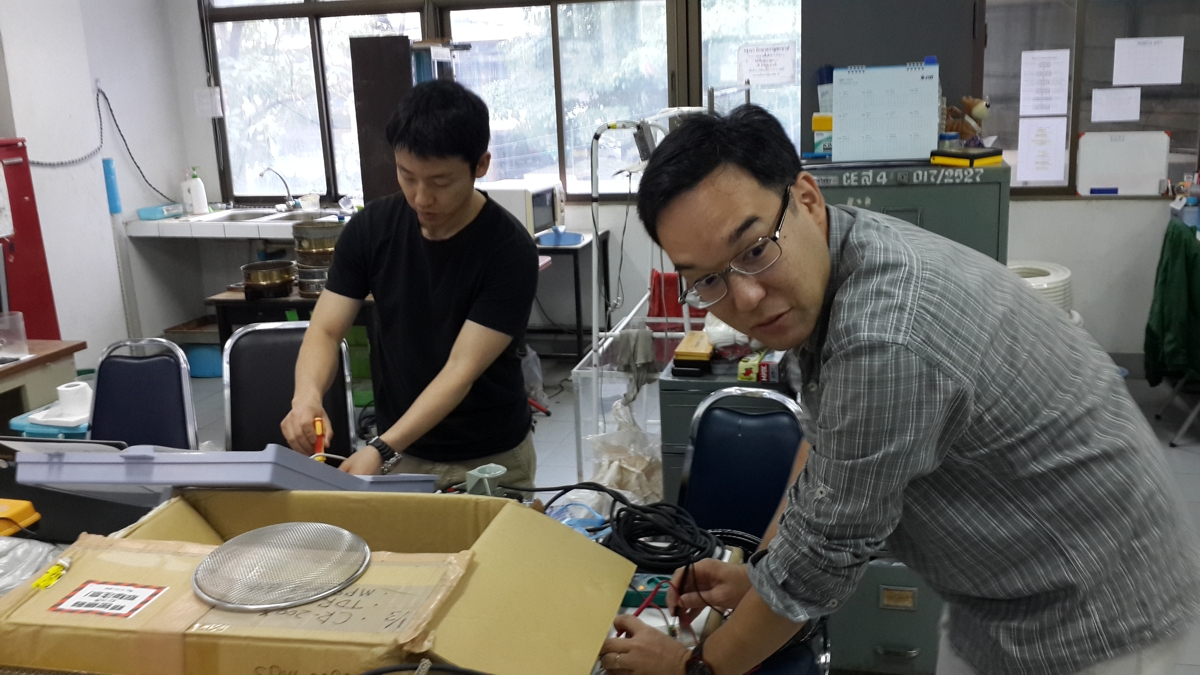
Preparing for field monitoring with Dr. Apiniti Jotisankasa (on the right), March 2017
I acknowledge his suggestion of DIY electronics.
Geotechnical Engineering Research and DIY Electronics
Experimental and field research in geotechnical engineering requires electronic devices, such as hardware controllers and dataloggers. Unfortunately, they are not mass-produced (at least not in a same way as smartphones) and expensive. It is sometimes hard to find a device in the market just satisfying your needs. This is especially true when the tests you want to perform are relatively simple in nature. If you want to record field data continuously for many months, the equipment's price can be eye-watering.
Meanwhile, electronics is becoming more and more beginner-friendly, thanks to the popularity of Arduino and its likes. My research group makes most of our limited knowledge of electronics to improvise whatever needed for our experimental/field research. Our experience and recipe of devices are shared in my blog 'geotechlab-workshop' since 2020. My intention is to help young researchers with limited budget but with willingness to explore more possibility with their own involvement in the equipment. Boasting what you created is the best part of DIY - why not do it for our research tools too?
Nishimura's blog - geotechlab-workshop (sorry, in Japanese only!)

Examples
Here I introduced some examples of what I have made so far. There are many others!
WiFi datalogger for strain-gauge sensor
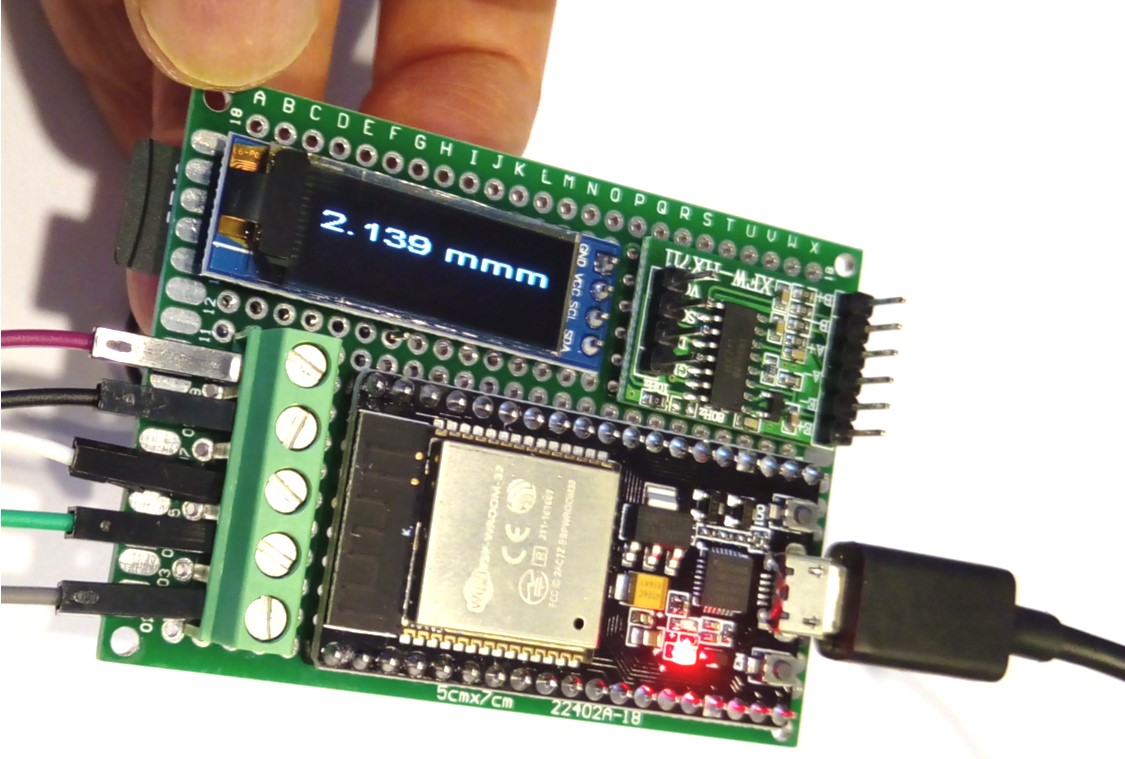
This deivice energises, reads and records a strain gauge-type sensor. The data are recorded to a microSD card as well as transferred to the cloud via WiFi. Assuming an incremental loading oedometer test, the recording interval becomes gradually longer with time since the reset button is pressed. The recipe for this is explained in No.36 of the Blog.
Datalogger for 4 oedometers
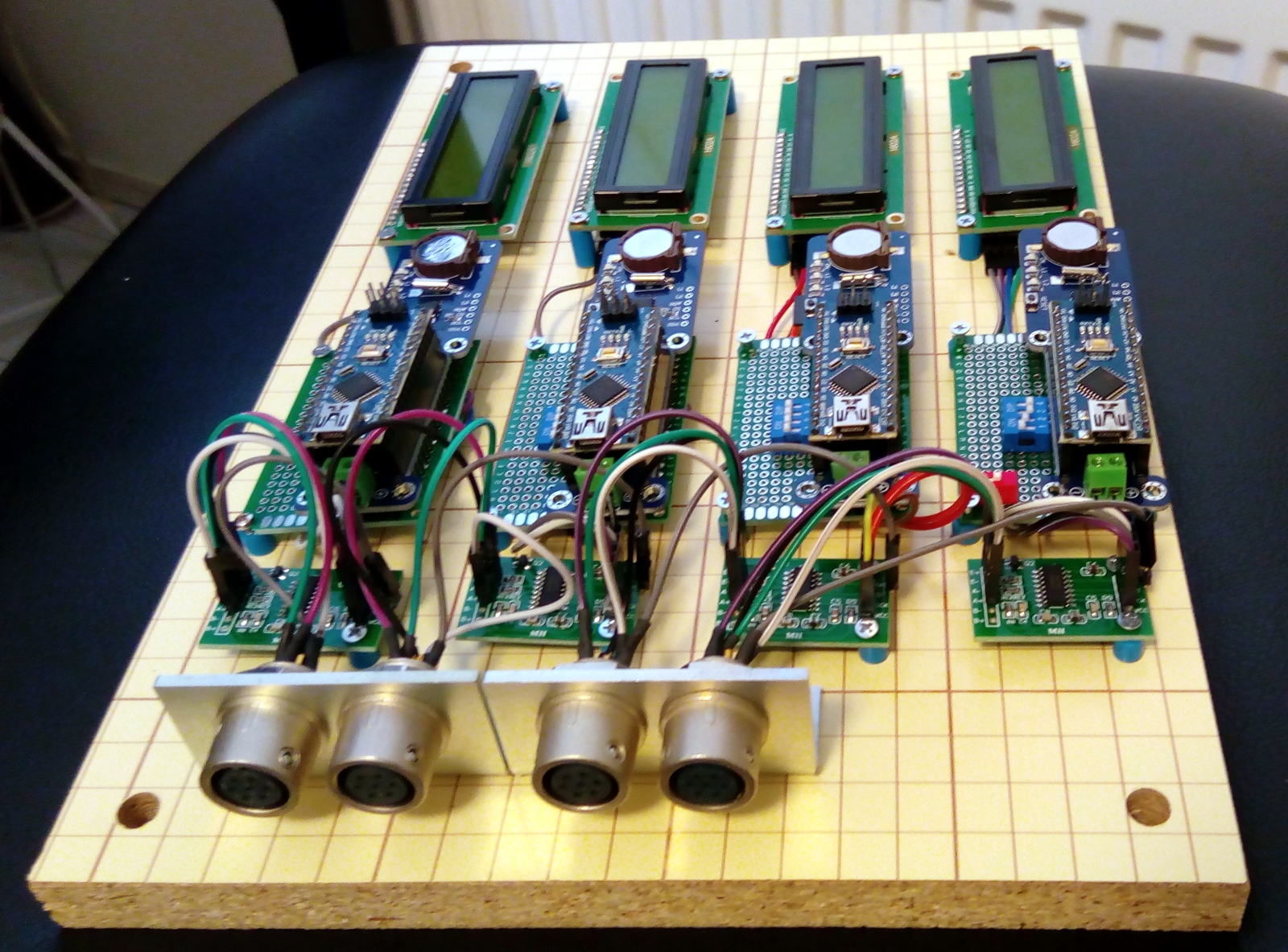
This is a simple datalogger for strain gauge-type sensors. The output data are recorded to a microSD card. The point of this device is to have 4 independent, indentical devices in row, envisaging 4 independent oedometers. Why not have a single logger with 4 channels? That is because each oedometer is handled by different operators - you don't want to take responsibility (for inadvertently switching off) of other people's test!
Controlling/datalogging interface for continuous pressurising (CP) soil water characteristics tests
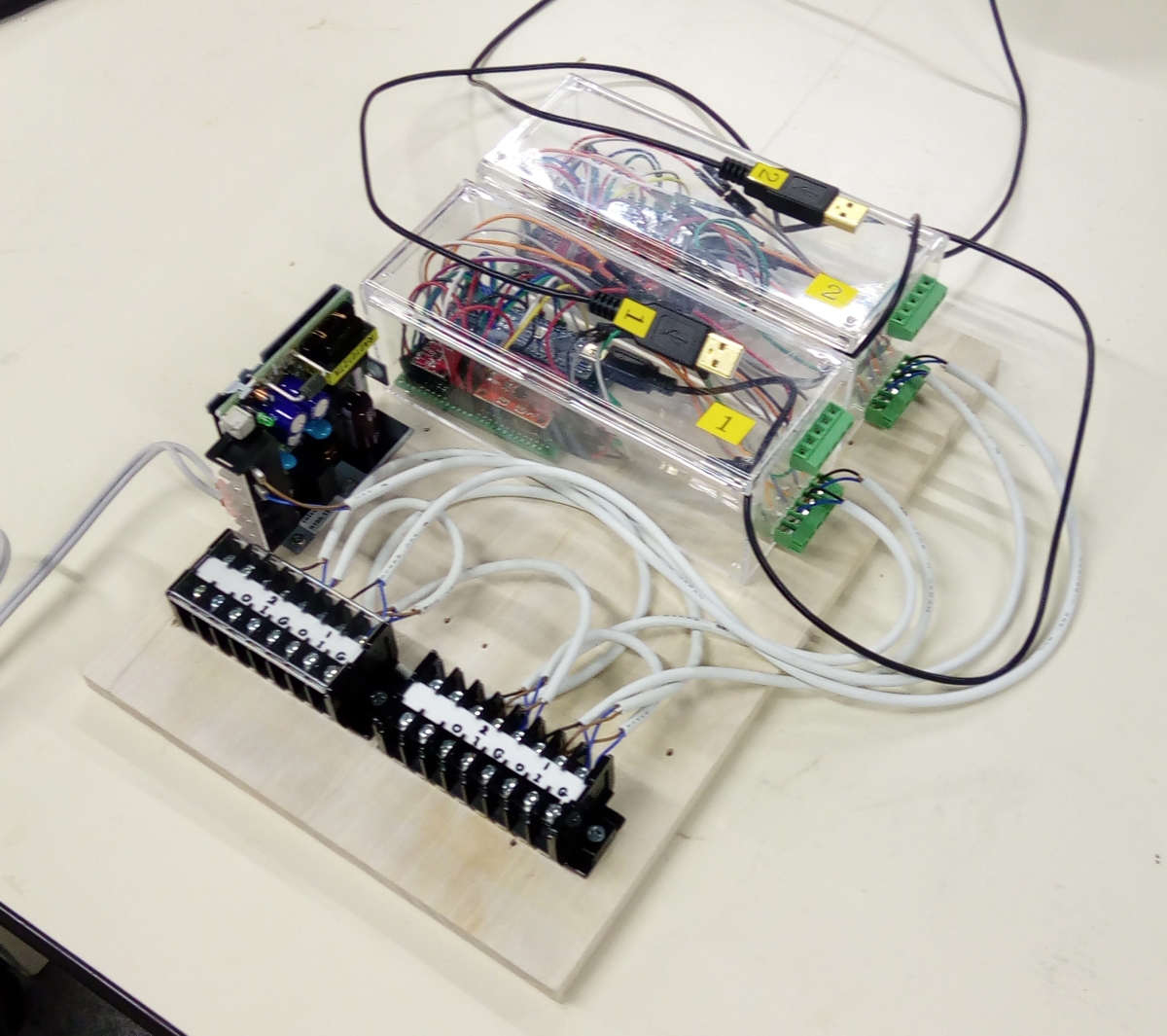
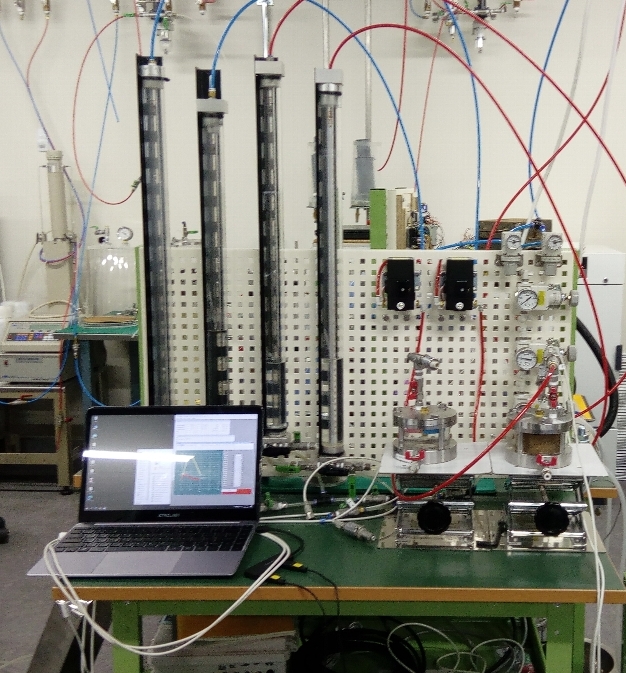
This is an interface (between Windows 10 and hardware) for CP SWC tests. The testing method, developed by OYO Corporation, requires automated slow increase of air pressure while measuring the water outflow from the sample and the pore water pressure. To flexibly design a air pressure path, we adopt our home-grown integrated laboratory software Cockpit. This device works as a USB-interface between Windows 10 and the electro-pneumatic transducer. We have two machines to work in parallel, so we have two interfaces too. The plastic cases and the wooden bas board are all from one-coin (100-yen) shops!
Datalogger and control box for 1D freeze-thaw testing
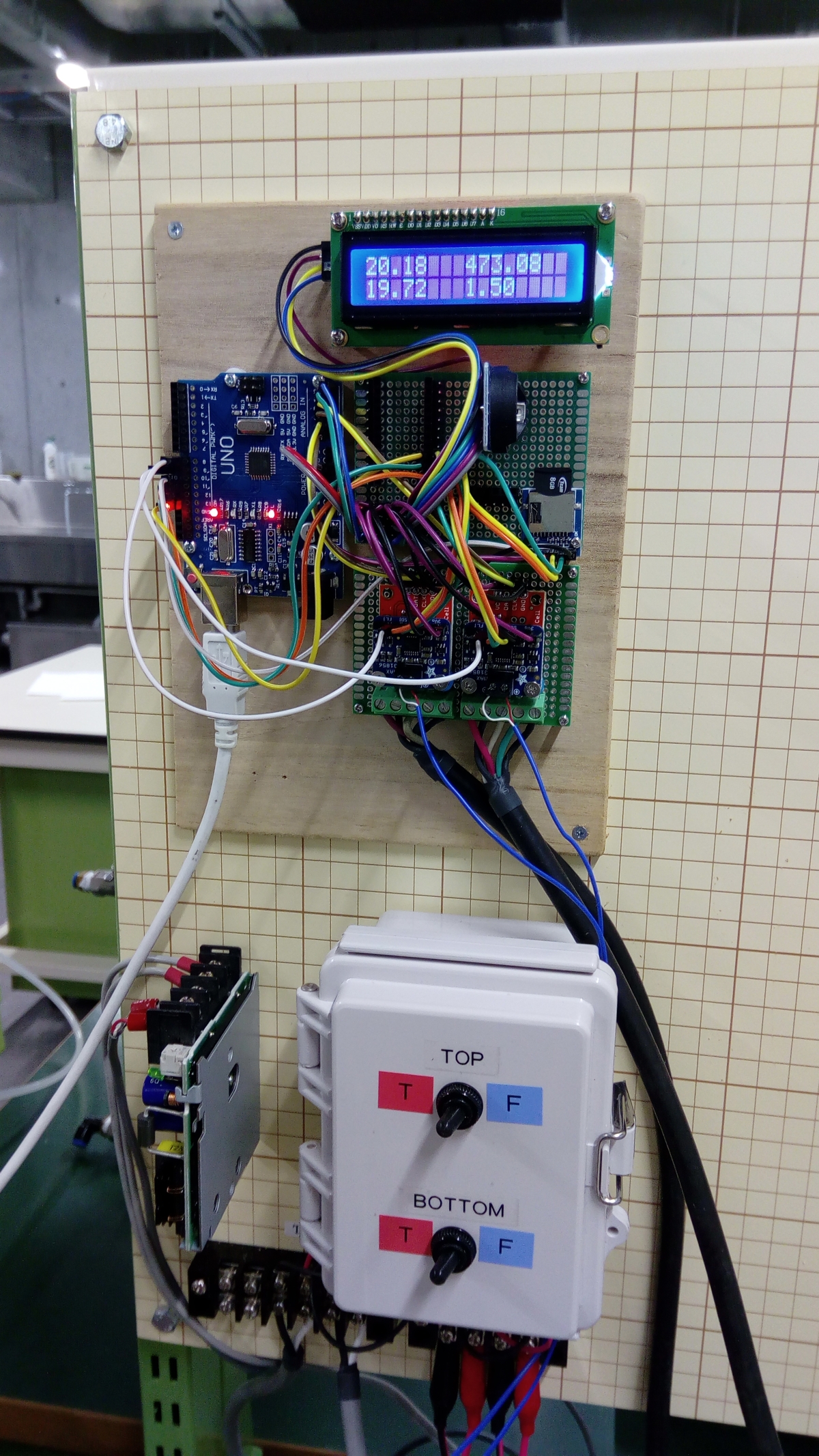
This is a datalogger of strain gauge-type sensors and thermocouples, combined with a control box for one-dimensional freeze-thaw testing. The thermocouples measure the temperatures at the top and bottom ends of the soil sample. The control box is a simple switching box reversing the polarity of voltage to Peltier plates, which are used for quickly freezing and thawing the soil. Extremely simple, but useful enough to eventually produce a paper on Geotechnique!
Field datalogger for tensiometers
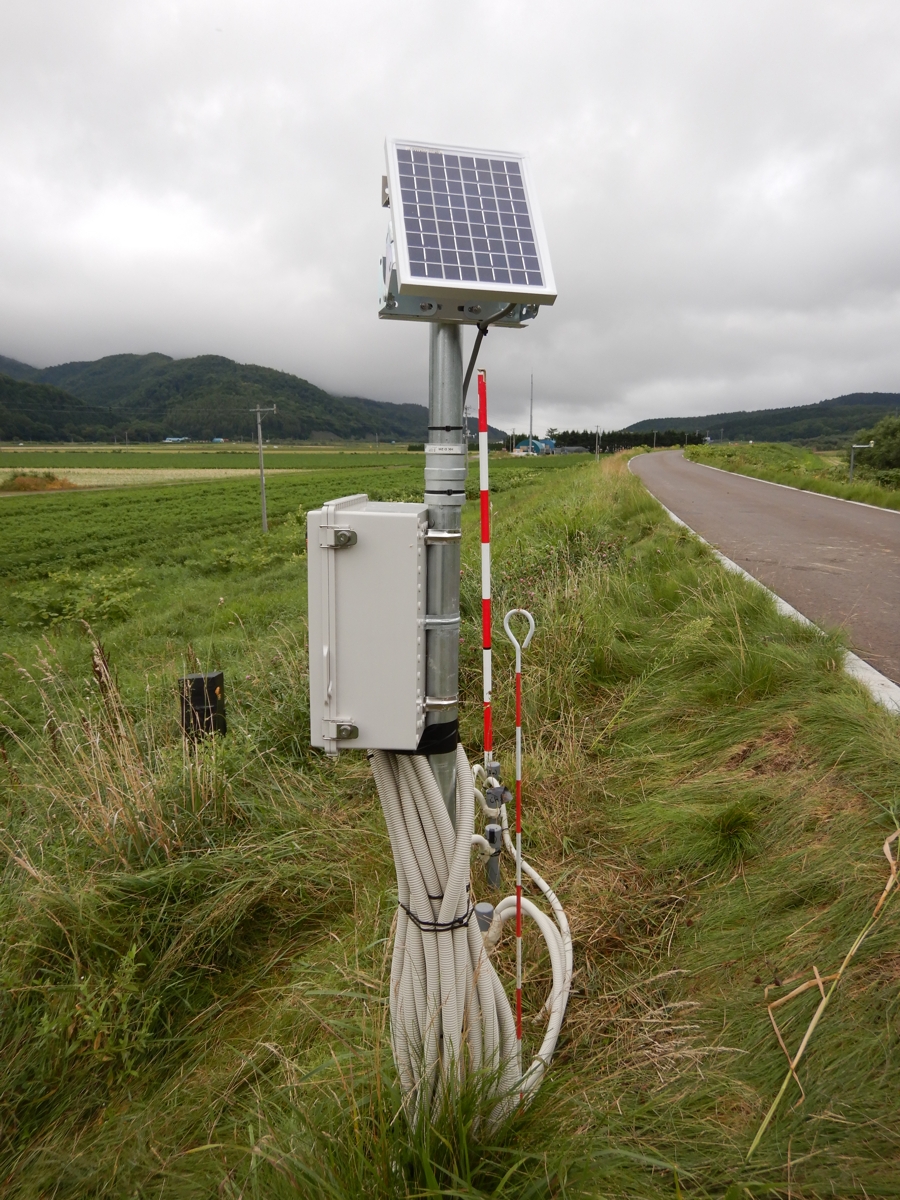
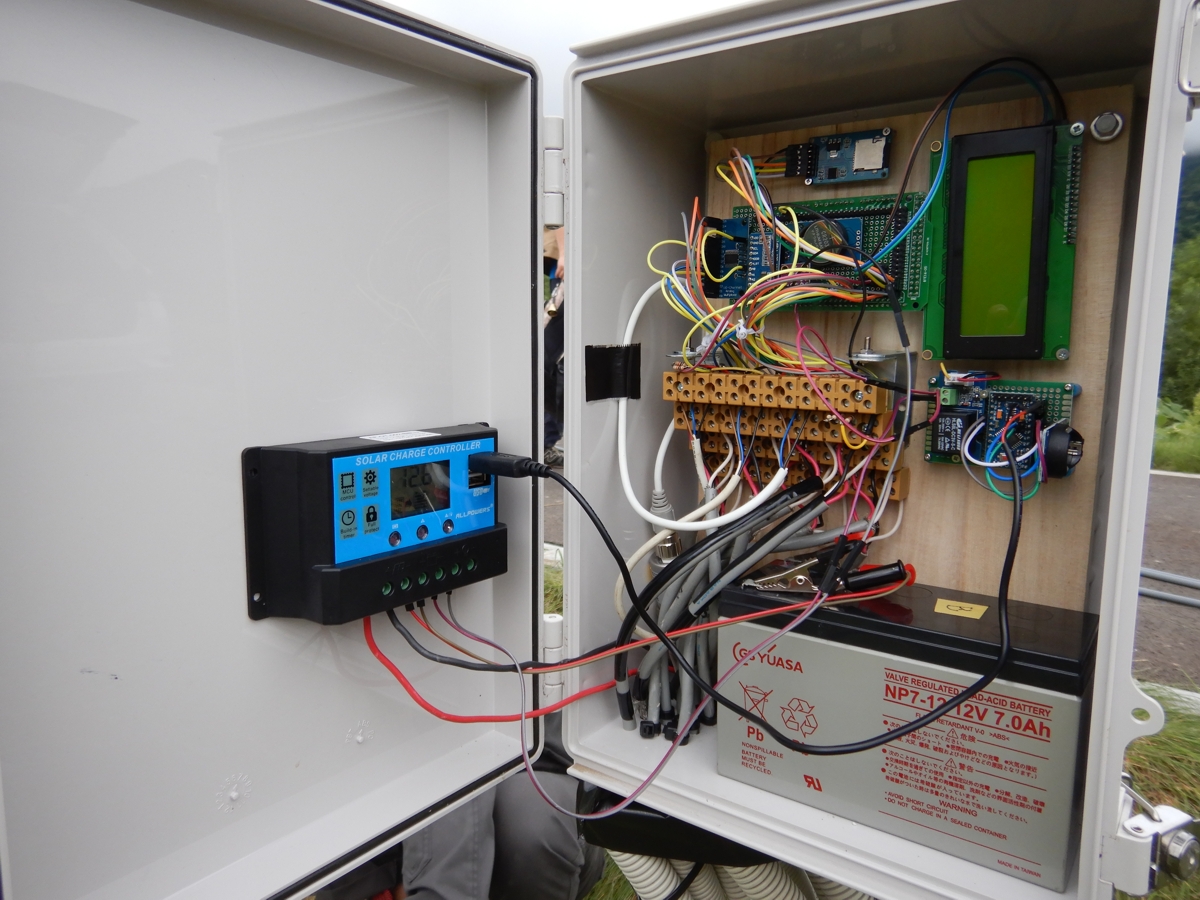
I have been making many field dataloggers (with different degrees of sophistication) to record the pore water pressure measured by tensiometers (which are hand-made too). The type shown here is the design around 2018. This is around the time when I was fed up with battery exchange, and started to adopt a solar panel. Apart from 10 seconds every hour during which the data are read and recorded, the microcontroller is in deep sleep (this was not too straightforward - discussed in No.14 and No.15 in the Blog), so a 7Ah battery will keep the monitoring at least for a year. The whole setup costs only 20,000yen ($200) or so (of which 5,000yen goes for the plastic box!).
Multi-channel tensionmeter array with LPWA data transfer system
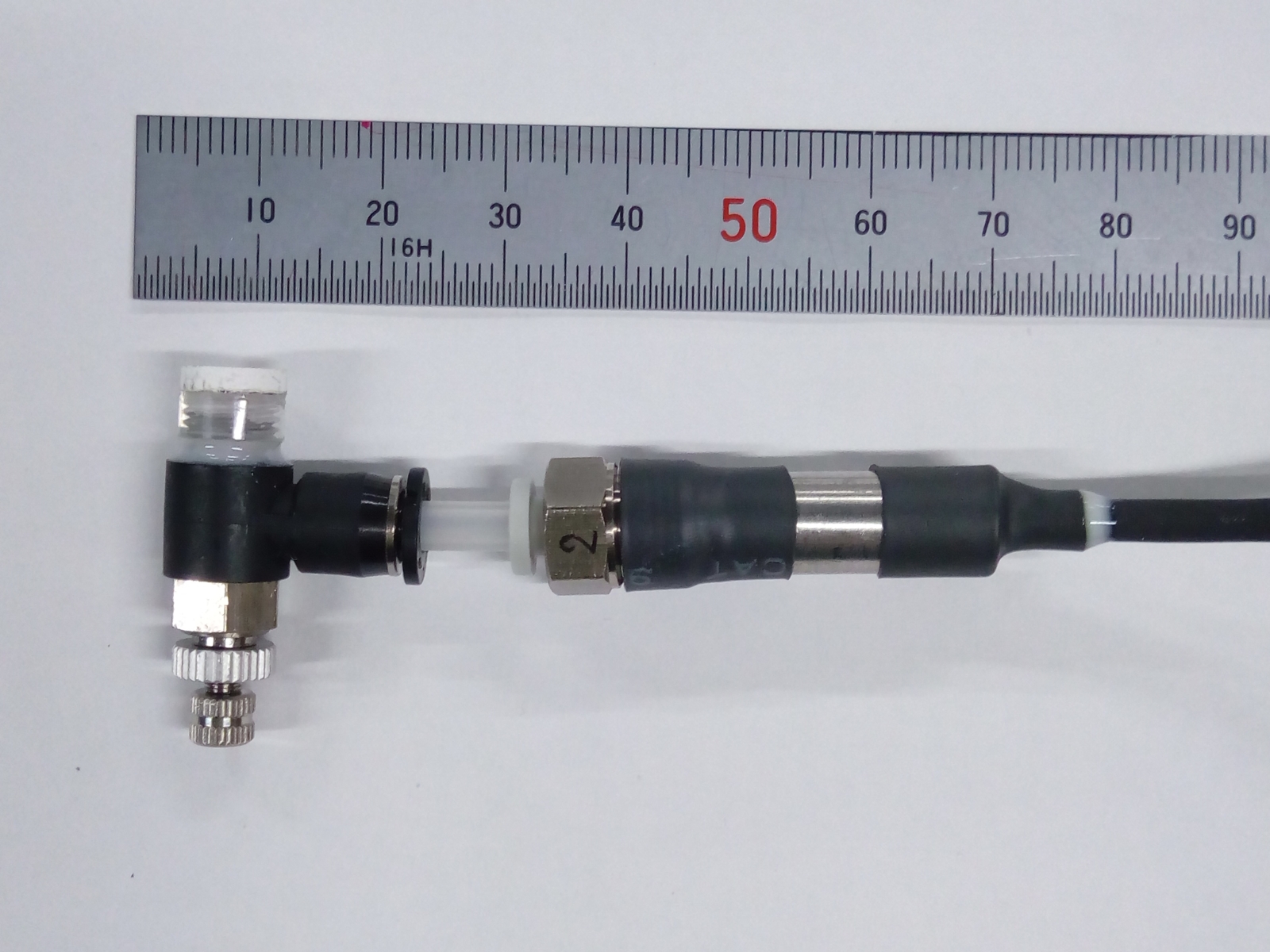
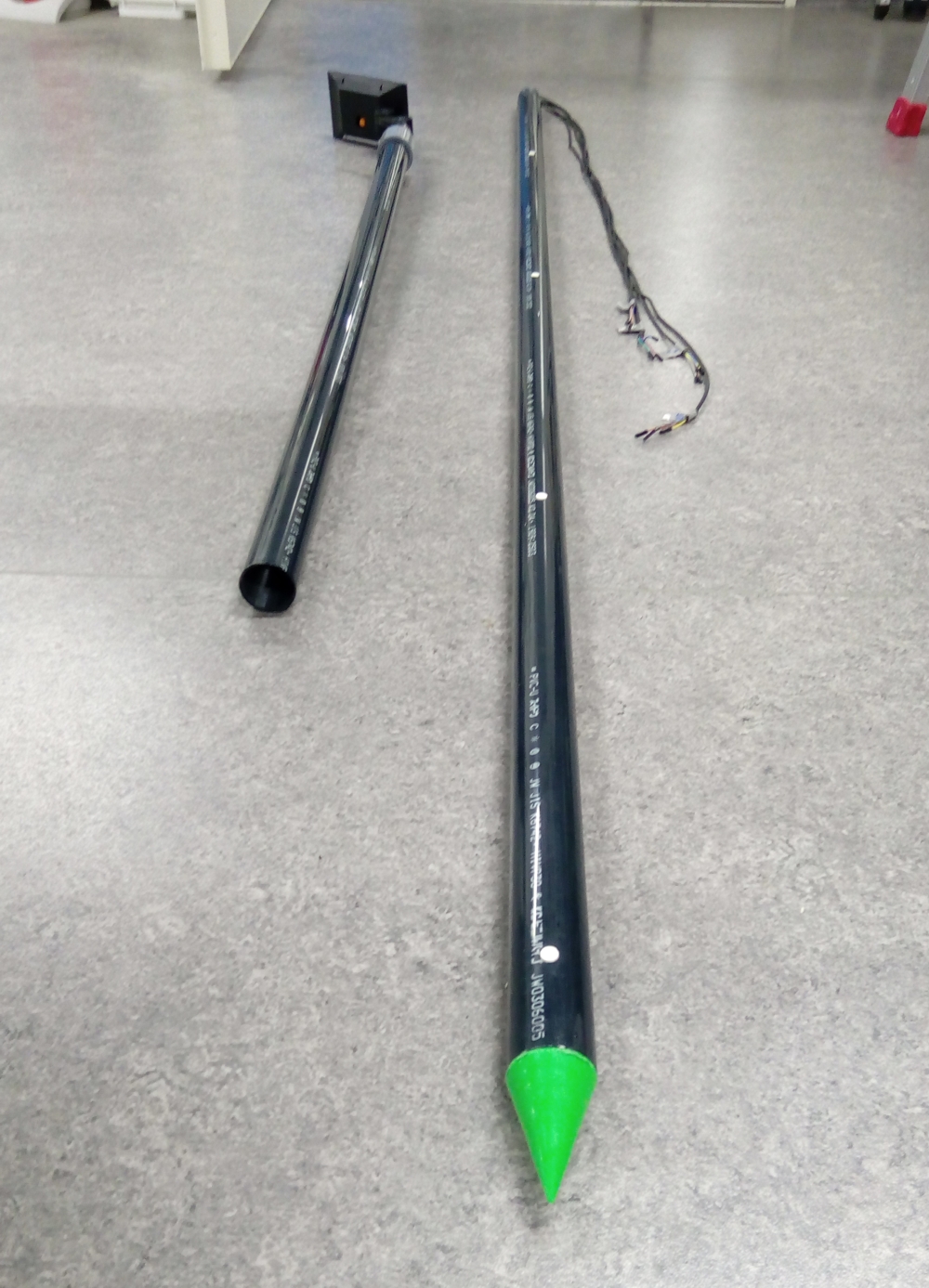
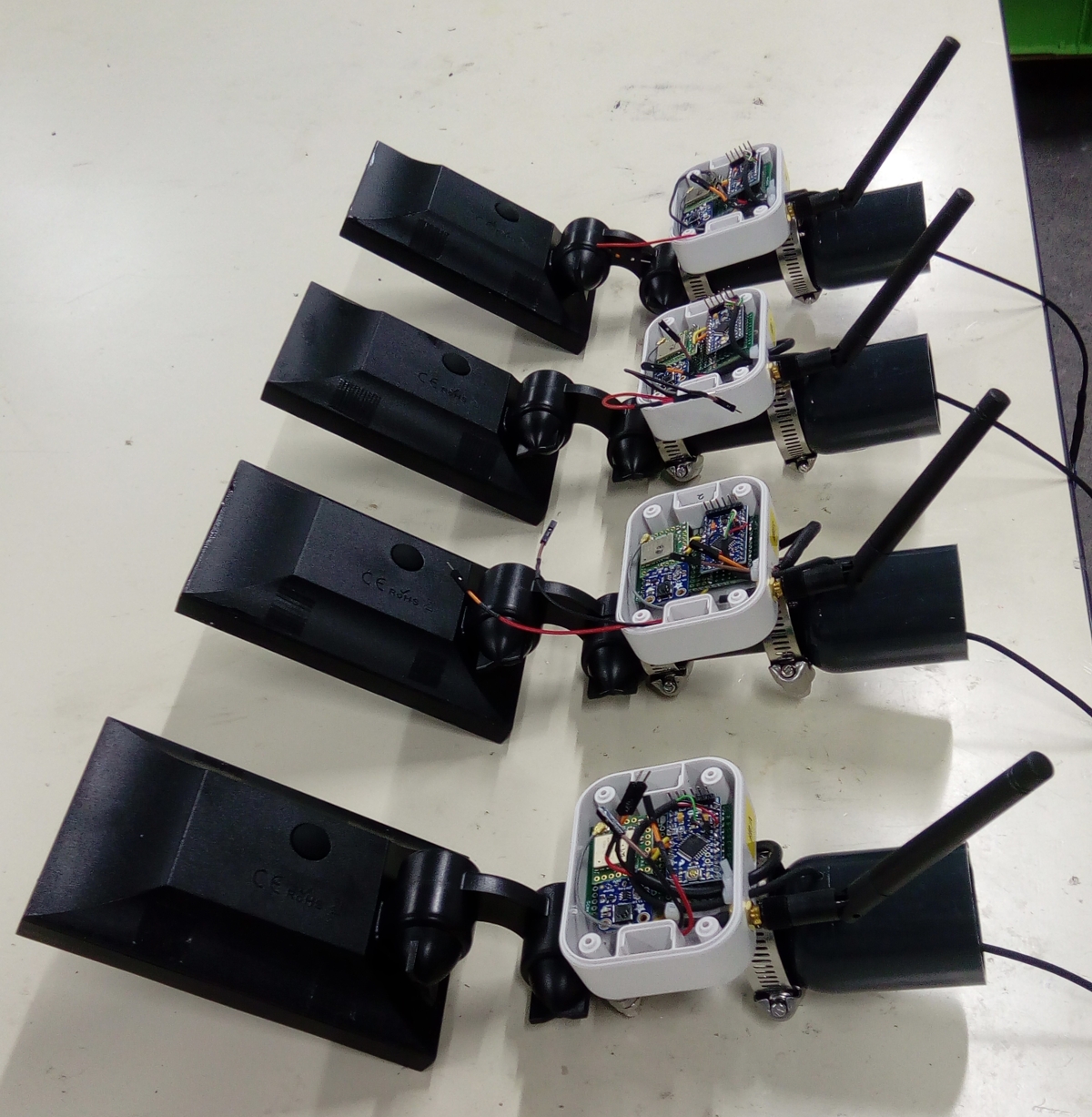
This is probably the most efficient field pore water pressure monitoring device ever conceivable. You can just stick it into the ground, and switch on. The rod has ceramic discs at every 50cm, to each of which a miniature tensiometer is installed. The data are recorded and sent to the clound via LPWA (Low Power Wide Area) communication, as well as being backed up in a microSD card. It will work on solar energy without a need for battery exchange. In theory, we do not need to visit the site again for maintenance (that is, the cavitation problem apart). The ingredients cost less than 30,000yen ($300). The trick is to buy a cheap garden light with solar panel. It usually contains a Li-on battery (don't grab an Ni-H type), solar panel and charge controller. It is cheaper than buying them individually, and saves you the time to put them together.
Snow cover depth gauge
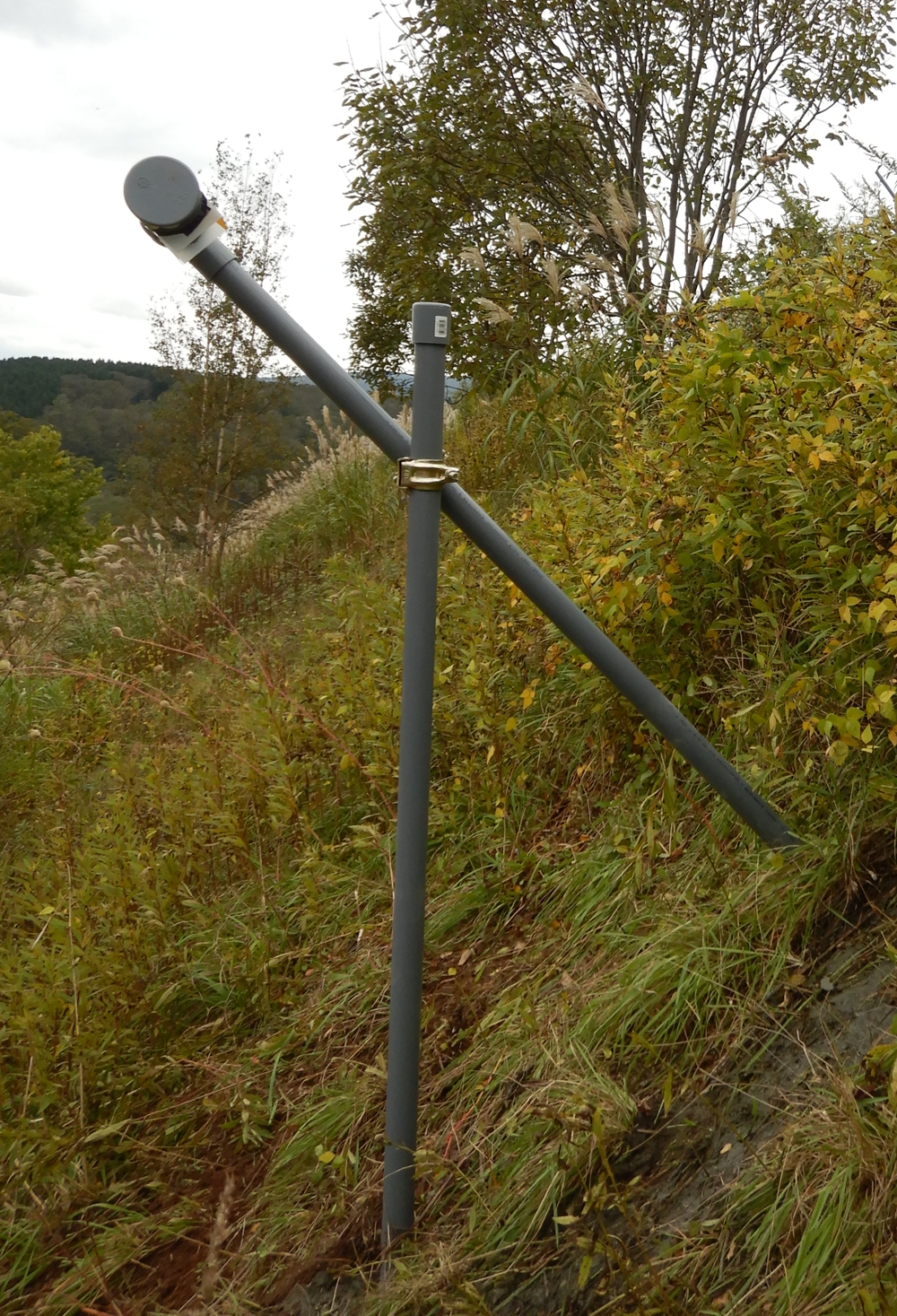
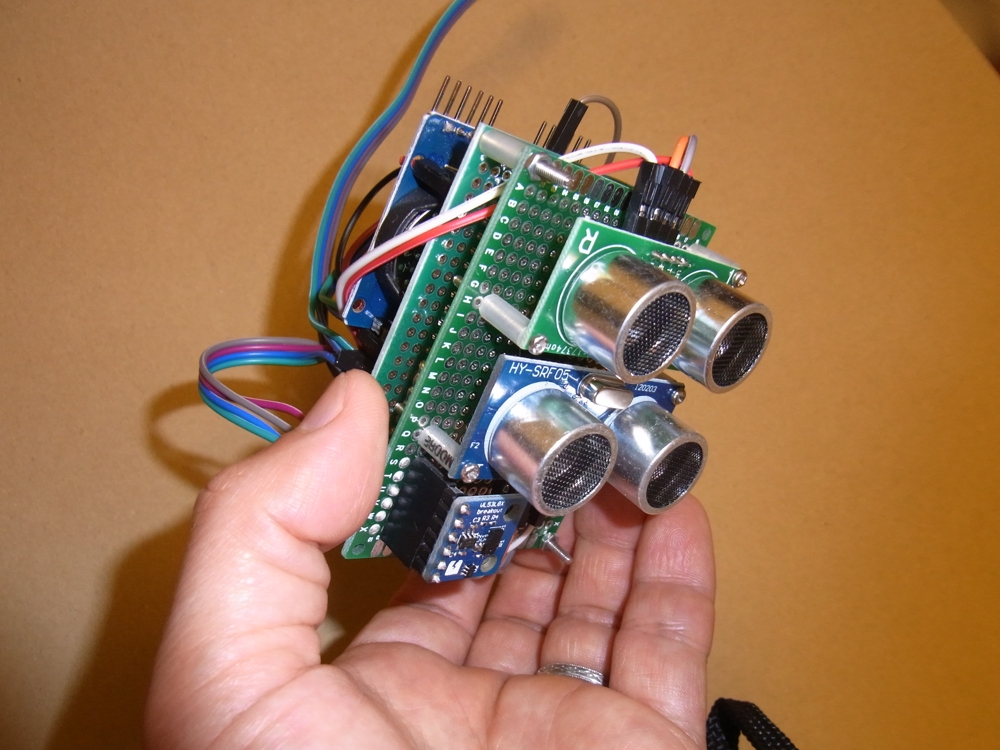
This is a device to monitor snow cover depth during winter. It combines three measuring principles - head-to-surface distance by infrared time-of-flight, head-to-surface distance by ultrasonic reflection, and recording temperature profiles by 10 thermometers distributed at 10cm intervals. Two different systems are used for ultrasonic reflection. It is not straightforward to obtain a continuous data in a very severe winter environment (sometimes the snow sticks to the head), and such multiple mechanisms are desirable.














